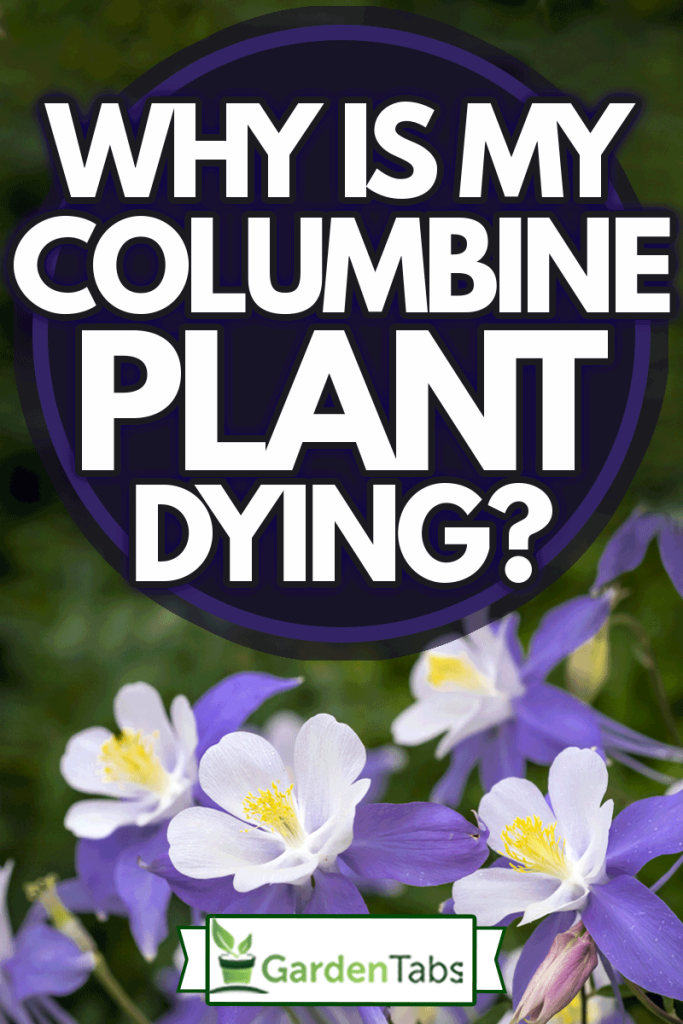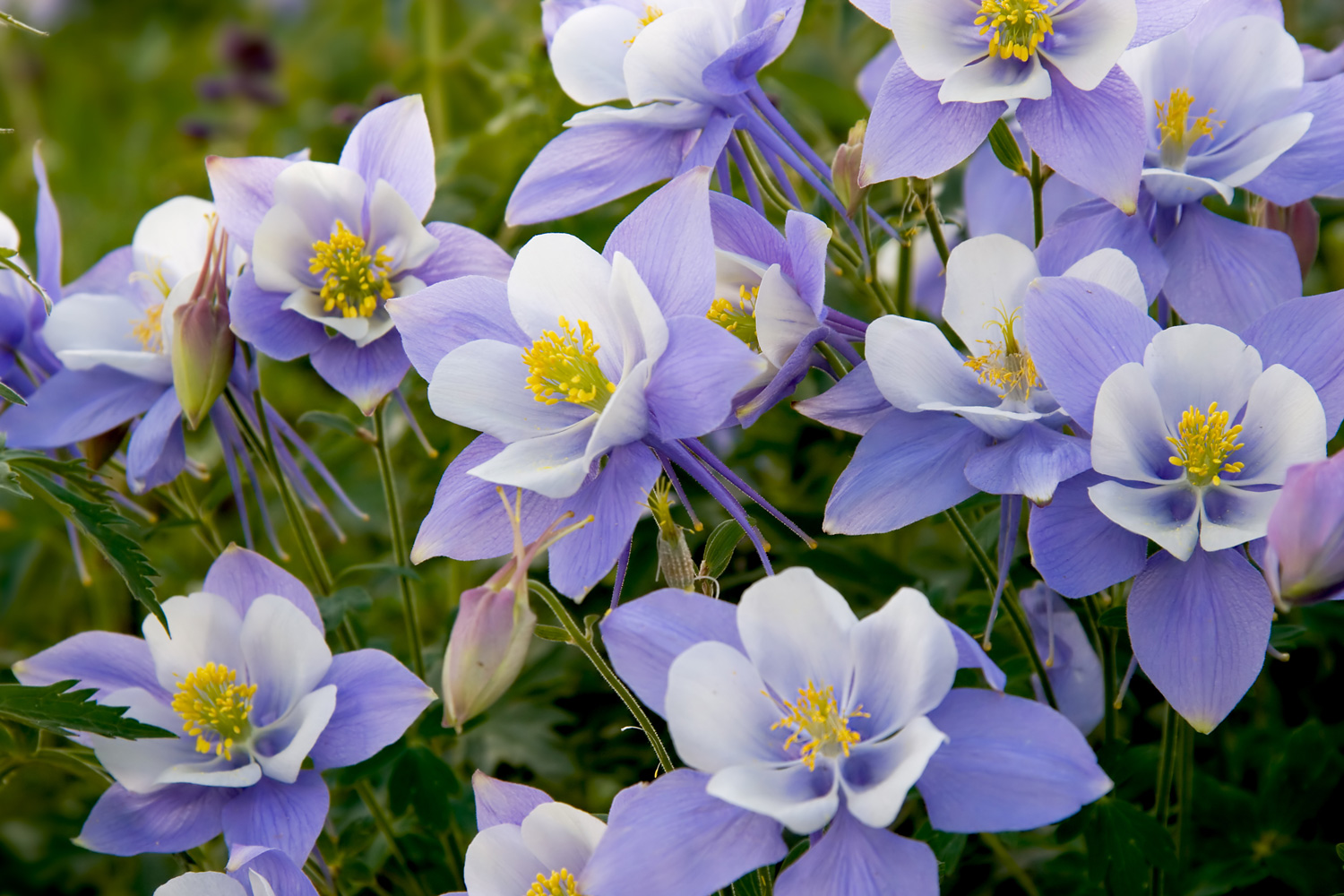If the columbine you planted at peak bloom starts wilting away rather than blossoming, you might be searching for the reason this happens and the best way to stop it. To assist you we have spoken with horticulturists, and here's the reply we got.
Factors that might cause your columbine plant to die include:
- Mildew
- Poor soil
- Pests
- Wireworms
- Pesticides
- Aphids
To further understand why your columbine keeps wilting away, stay put and keep reading as we would explain these factors more. We would also talk about ways you can successfully grow your plant.

Columbine Plant

Aquilegia, commonly referred to as columbine or granny's bonnet, is a genus of roughly 60–70 perennials. Columbines are distinguished by the spurred petals on their blossoms. This herb is perennial and has dense rhizomes and a woody, tall stock.
The blades are compound, 1–3 ternate, 3-lobed, and partite, with lobes that are acute. The top cauline leaves resemble bracts, while the lower ones resemble the basal leaves. The terminal bisexual hermaphrodite blooms are attached to stems and branches.
Typically, they are pentamerous five-tube honey leaves that are spurs or saccate at the base, semi-erect with a flat limb. The spur secretes nectar and is pointed backward. The innermost staminodes have many stamens and over 50 in swirls of 5.
Ten membranaceous intrastaminal scales are present. The carpels are free, and there are five pistils. The fruit has numerous (between five and fifteen) semi-erect, connate downwards follicles. These are created at the end of the pistils and can hold several seeds.
Why is My Columbine Plant Dying?
For all its beauty, the columbine plant, unfortunately, is susceptible to a lot of natural mishaps that can bring an untimely death or wilt to an otherwise already blossoming plant. Below are some of the things that can bring about the death of a columbine plant.
Poor Soil
Columbines prefer light environments, which explains why they do well in meadows and forests. The roots rot whenever the soil is very moist. The plant may wilt if the soil is overly dry.
It is significant to remember that while columbines prefer the sun, they detest hot weather. Make sure your plants have good drainage, especially in the heat.
Loamy soils work well for columbines. Remember that you should add more compost to the soil to retain moisture if you live in a warm climate. Even during the winter, mulch can help keep your columbine alive.
Aphids
A protracted invasion of aphids on your columbine plant could kill it. Aphids are found on a variety of plants. By puncturing the plant and draining out the juices, they harm it.
So, what is the best way to eradicate aphids on a columbine plant? Well, you can spray the leaves with a mixture of a mild water solution and a few drops of dish soap when an aphid infestation gets bad. A stalk borer is another pest that might damage your plant.
Wireworms
While few wireworms may be yellow and have hard shells, many are yellow and have dark brown shells. Wireworms chew off the seeds and roots of your columbine plant and graze on underground stems, some skeleton plants may still appear to be in good condition.
The afflicted plants will droop and eventually die if you don't remove the garden debris and roughly 8 inches of soil beneath it.
Pesticides
Avoid using strong pesticides to get rid of pests eating your columbine. Why? This is because hazardous pests can be controlled naturally by beneficial insects. Spiders, parasitic wasps, lady beetles, and numerous other insects are among the most significant.
Mildew
The pathogen that causes the affected leaves on the columbine flower typically thrives in cold climates. Applying fungicides will help you manage this. You should also look for safety warnings and usage instructions on the label.
How to Stop Columbine Plant From Dying
After planting columbine, keep the plants wet until they are well-established. Then, aside from protracted droughts during which they will need additional watering, only weekly irrigation is required.
Every month, give out a water-soluble fertilizer. Brighter blooms and stronger foliage will result from regular fertilization.
Below are a few steps:
- Do not overwater.
- Cut back wilted flowers. Along with the stalks, more buds will grow. Thus, the bloom season can be prolonged by up to six weeks until the middle of summer.
- In the fall, trim the foliage to the ground.
- Cover to protect plants before the soil freezes.
Do Columbines Like Sun or Shade?
An exemplary perennial, columbine is simple to grow and provides seasonal appeal for most of the year. It has dark greenish foliage that turns crimson in the fall and blooms in a range of colors in the spring. Hummingbirds are attracted to the bell-shaped blossoms, which can also be used in cut flower arrangements.
Columbine plants don't have many requirements for soil, as long as it drains well and isn't too dry. While they generally appreciate the sun's full rays, they don't like it when it's too hot, especially in the summer.
Growing them in shady areas and providing them with a lot of mulch will help keep the soil humid in warmer regions like the south.
Why is My Columbine Drooping?

Most flowers are classified as nodding or upright. Columbine falls under the category of nodding leaves. Columbine drooping or nodding is part of its nature and this is because of its flexible pedicles, so mild drooping should not call for any serious alarm when it reoccurs over time.
A way to ease this off is to plant a stronger plant near that can assist the leaf to stay more upright and avoid nodding.
Will My Columbine Turn Yellow?
If the columbine is changing to a yellow color, it means the flowers are in areas with extremely hot or dry environments. However, if columbine flowers turn yellow, it doesn’t necessarily signify the death of leaves.
Such leaves bloom again in a more favorable condition. Columbine colors tend to change at an increased temperature or dryness, or drainage problems. And this can be noticed during summertime.
Can Yellow Leaves Turn Green?
Once a leaf turns yellow, it is regarded to be dead. Sometimes the discoloration noticed on the leaves is caused by noticeable changes in climate and is likely to turn back to green if it hasn’t gotten extreme, but this rarely occurs. Yellowing should be considered a warning signal for bad growth.
The yellowish pigment noticed on leaves is often a sign of stress. Generally, it is impossible to turn a yellow leaf back to its initial green color. Simple common causes of this effect are bad watering and the stress on plants.
However, that is not all. Leaves can also be faced with some biological or potential causes of this effect as well, for example, pest infestation, temperature changes, lack of fertilizers, transplant shock, diseases, climate changes, and so on.
Chlorophyll
Chlorophyll is an important factor in photosynthesis and plant growth. The decoloration of leaves can be referred to as chemical breakdown.
Foliage leaves have chlorophyll and when they are overwhelmed by a large amount of chlorophyll, you notice an extreme yellow color. Naturally, when the leaves turn yellow, it falls out. Therefore it cannot return to its green color.
Will Columbine Re-bloom When Cut Back?

Columbine is a perennial crop, so cutting back will re-develop its foliage growth. Most renowned gardeners recommend cutting back columbine plants best during spring immediately after fresh and new growth is noticed on the ground.
Remove any previous growth from columbine if it is still noticeable as well as the new growth that has increased above ground level. By doing so, the columbine will produce less foliage growth which will, in turn, make other plants fresher.
Caring For Columbine During Winter
If the climate conditions are friendly, the columbine should preferably be cut during autumn before new frost. Cut the entire plants to a few inches above the ground level, and spread the layer of straw mulch around the plants to keep the roots safe during winter.
This process is required if the plants are usually infested. Simple common causes of this are bad watering and the stress on plants. However, that is not all. Leaves can also be withered by temperature changes, lack of fertilizers, transplant shock, diseases, climate changes, and so on.
Are You Supposed to Deadhead Columbine?
Columbines are low-lived perennials. If you leave the flower heads germinating to seed instead of deadheading them, they will quickly grow and establish a colony of plants when microbes are ideal. Crops can be grown in around 20 to 30 days because they have a modest growth rate.
In Conclusion
With the information provided, we trust you to be able to make the necessary adjustments needed to ensure your columbine plants grow in health and continue to blossom.
To learn about other types of garden plants, we recommend these posts:
